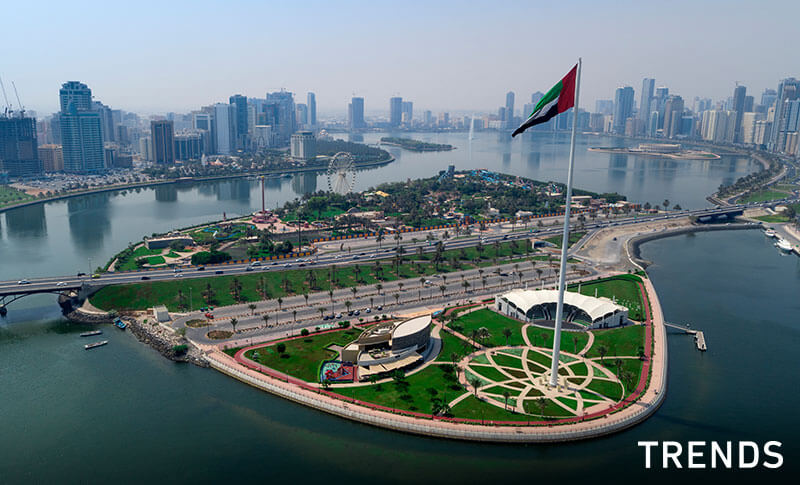
Enquiries for properties and transaction numbers have been on the increase for new, modern communities

AHMED ALKHOSHAIBI
CEO, Arada
The biggest change today is the major improvements that have been made to the regulatory environment. People who are buying property in the UAE now know that the government is working to protect their money, allowing them to invest with confidence. Many of the markets in the UAE have faced depressed sentiment over the last couple of years. Some of these markets will stabilise in 2020 and return to their upward path in 2021. By 2025, new initiatives such as the Higher Committee for the property market in Dubai will have fully kicked in, allowing for the supply and demand situation in the market to stabilise.
There is no getting away from the fact that it has been a particularly trying time for the property industry in most parts of the GCC in recent years. There is no one central reason for the poor performance, but really a number of issues that have combined to create a pretty poor environment for the real estate sector.
These have included the fall in oil prices plus the subsequent knock-on effect on government spending and consumer sentiment and a local mortgage cap put in place to prevent the kind of speculator-driven boom we saw prior to 2008. In addition, the rise in the value of the US dollar, the drop in the value of the Russian Rouble and Brexit are just examples of the kind of external macroeconomic issues that have hurt international demand for property, especially here in the UAE.
The biggest problem being faced right now in the UAE is the unbalanced supply and demand position, with a significant pipeline of off-plan homes set to be completed in the next couple of years. However, the introduction of a higher committee in Dubai to regulate supply and demand and oversee urban planning is a huge step in the right direction.
However, amidst the difficulties being faced elsewhere in the Gulf, I would argue that there is one obvious outlier. When it comes to real estate, Sharjah had played a somewhat quieter role as neighbours opened up their markets and embarked on building booms that have transformed cities but also led to some sizeable swings in prices. As a result, Sharjah has built up a reputation for stability and good governance over the course of 15 years, with prices remaining within a steady range, thereby offering plenty of comfort to investors.
For Sharjah, the sea change came in 2014 when the government decided to allow all nationalities to buy property in the emirate, following in the footsteps of some of its neighbours. Last year, the government went one step further, by allowing all nationalities to purchase real estate without a residency visa. The effect of these two decisions has been remarkable, effectively releasing pent-up demand among of long-term residents who had long wanted to put down roots in their adopted homeland and ushering in a new generation of developers to set up shop in the city.
Launching our initial project in early 2017, Arada was one of the first of those developers, but we’ve been joined by many more, lured by the favourable supply-and-demand situation. Steadily increasing competition has undoubtedly been great for Sharjah; it has forced the industry to become more efficient and customer-focused, which has of course resulted in better deals for buyers. The net effect has been the creation of well-designed homes in integrated communities, an asset class that is already available elsewhere in the UAE, but at a far more accessible price point in Sharjah.
The sales results have been impressive, with data showing a steady increase in demand for Sharjah property, even as interest elsewhere has declined. Official data from the government regulator of the sector, Sharjah Real Estate Registration Department, showed that the number of transactions had risen by 31.4 percent in the third quarter of 2019, compared to the same period a year earlier. Year to date, AED 18.9 billion has been pumped into Sharjah real estate, already 84 percent of the total investment for 2018.
Not everything has been rosy, however, and Sharjah has certainly not been immune to the difficulties being faced by other markets, with rents and prices across the emirate in general mirroring those of its neighbours and softening slightly this year, especially in inner-city areas.
But the tale is slightly different in what we refer to as “New Sharjah”, a cluster of sites located just outside the city centre, where Arada and some other developers are building their communities. These include Muwaileh, a booming district that is located between University City and Sheikh Mohammed bin Zayed Road, and Al Tay, a suburb that will play host to some of Sharjah’s large projects. Research carried out by real estate consultancy Savills in October showed that enquiry levels across these locations rose by 50 percent between the first and second quarter of 2019, with demand expected to continue for the remainder of the year.
However, I would argue that the real reason for the Sharjah property success story was not the decision to open up the market in 2014, or indeed the approach of developers such as Arada. It’s Sharjah itself. What do I mean by that? When it comes to Sharjah, the phrase that I have used most often is ‘a hidden gem’. It has one of the most diversified economies in the Middle East, with no one sector contributing to more than 20 percent of GDP, and the non-oil sector as a whole contributing to 94 percent of gross domestic product.
Government spending reached another record high in 2019, with an AED 25.7 billion budget that is up 10 percent on the previous year. The number of business licences being issued is steadily on the rise, while the emirate is on course to hit its target of 10 million tourists annually by 2021. In addition, Sharjah’s education sector is the envy of many of its peers, and the city is well-known as a cultural capital for the region.
For Sharjah, the sea change came in 2014 when the government decided to allow all nationalities to buy property in the emirate, following in the footsteps of some of its neighbours.
None of these achievements has happened overnight; truly influential institutions and policies take years to develop and cannot be bought on a whim. They are the product of decades of planning by a wide range of government authorities. For example, the American University of Sharjah, which is now ranked as one of the top 20 universities in the Arab world by The Times newspaper, was founded 22 years ago. Similarly, significant investment over the course of many years in Sharjah’s museums and cultural attractions, and more recently hotels, have slowly made the emirate a destination to visit in its own right.
Developers like Arada and others have reaped the benefits from this longstanding investment in a number of key areas, and I would argue that we have now reached a sweet spot in terms of real estate demand, assisted by these ancillary sectors. The changes in legislation that sparked the surge in interest back in 2014 have built on a foundation of stability and good regulation and have allowed companies like Arada to build the kind of communities, destinations and public realm that are now helping to transform Sharjah into a true city for the 21st century.